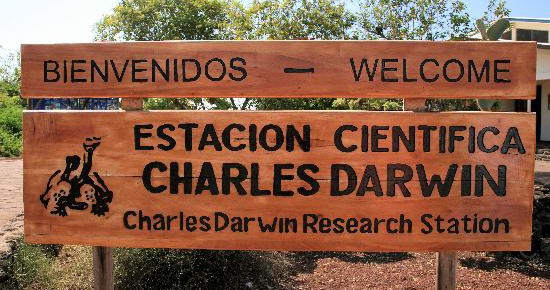If you are wondering how the Galapagos Islands were named and its origin, the answer is very simple: from the tremendous amount of Galapagos turtles that inhabit the islands.
Scientists, volunteers and students from around the world flock to the islands to study about the majestic creature called the Galapagos turtle. Any trip to the Galapagos islands will certainly including watching this creatures in amazement, and what better way to learn about these magical islands including, the conservation efforts to preserve the islands, the issues threatening the eco-system all while having the opportunity these giant Tortoises in their natural setting.
If you choose to stay in Puerto Ayora, before casting off in your boat of choice, be sure to make time to visit the Charles Darwin Research Station. Here you will gain an amazing education of the islands’ geography, eco-system, wild life, and climate as well as a up close and personal view of some of the most amazing wildlife that has made these islands the go to destination for some many wild life lovers.
CharlesDarwin Research Centre is located on Santa Cruz (a very cool and one of kind destination). The research center is a foundation and driving force of the conservation, environmental and biodiversity efforts to maintain the islands in their pristine state. The research center plays a crucial role educating the public the role all must play in the conservation efforts of this one of a kind destination
Another of the research center’s efforts is to collect some of the tortoise eggs and raise them until they are large enough to survive own their own. Evasive creatures such as dogs and rodents, brought ashore from mankind, pose a threat to the young turtles, and the research centers efforts insure a viable future for the turtles inhabiting the islands. While visiting the research center, you can see the baby turtles being raised before being released in the wild. Also, large orphaned pet are adopted by the agency, and set free to roam the islands. Once released, the animals are tracked by the research center to monitor their activities for research purposes providing additional knowledge required to ensure the longevity of the wild life here.
I highly recommend a visit to the research center. It offers viewing of some of the most spectacular wild life on the planet without the zoo like feeling.
At the end of the tour, don’t forget you’ll have some fantastic photography opportunities where you can pose with some of the gentle giants. This is the place to come to get up close and personal with a giant tortoise and to pose for that classic photo of a lifetime.
If you closely, you may notice that the tortoise has a number etched into its carapace. I have seen people going around checking tortoises’ numbers to find their lucky to take a photo of themselves with the lucky numbered turtle. I’ve already got plenty of pictures of myself, so I’m giving the next opportunity to take the next photo with some lucky and sexy turtle.
The most notably and popular turtle in the world was Lonesome George, the last giant turtle species who lived 130 years, but unfortunately he pasted away two years ago. Poor George!
For more information visit our websites:


















